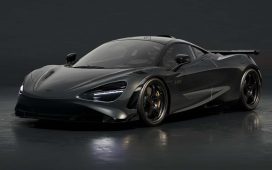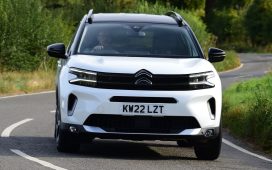
Not so very long ago, an article appeared in The Economist titled: ’Throughout the rich world, the young are falling out of love with cars’. This triggered much discussion at PH HQ. The article concedes that while car use continues to rise globally, there is good reason to think that a fundamental shift in attitude is upon us. Put simply, it contends that earning a driving licence is no longer viewed as a rite of passage into adulthood. Being The Economist, it has data to support this claim. In 1997, it reckons 43 per cent of 16-year-olds had licences in America. In 2020, that had dropped to 25 per cent. In Britain, in the last 20 years, the proportion of teenagers able to drive has reportedly slipped from 41 per cent to 21 per cent.
The reasons given for this decline, as you might imagine, are myriad. For one thing, it seems that while a preference for car ownership has not tapered, people are generally disinclined to drive as far as they once did. You can thank the internet for that, alongside a seismic shift toward working from home following the pandemic. Obviously, concern for the environment is cited as a major consideration for younger generations, as is the availability and convenience of taxi-based apps like Uber and Lyft. The growing tendency for urban planners to reject the car as an appropriate means of mass transport has doubtless taken its toll in big cities, and that longstanding mentality has helped to influence policymakers more broadly. Anti-car campaigners do not find it difficult to communicate their message to young people. Quite the opposite.
Needless to say, this all makes a good deal of sense. It would be a brave soul to argue that a 17-year-old in 1997 (take it from me) was more sensitive to the looming effects of climate change – or considered their own actions as a meaningful and necessary part of the solution – than today’s equivalent. An inclination toward activism, turbocharged by social media, is one of the defining characteristics of a more engaged adolescent population – and its effect on long-term political strategy is likely to prove a virtuous circle, given enough time. Nevertheless, when it comes to the question of ‘love’ and the comparative lack of it, it is important to consider the extent to which the electric car revolution generally – and carmakers specifically – are currently guilty of failing young people.


Generally speaking, of course, this has always been true. Owing to their complex nature, new cars have always been expensive to buy, and therefore marketing them to teenagers or anyone in their early twenties has rarely been to the advantage of a manufacturer’s bottom line. But in previous generations, anyone newly endowed with a licence could look forward to a veritable smörgåsbord of very cheap-to-buy, cheap-to-run hatchbacks. And while no one would confer God-like status on otherwise very humble examples of the Vauxhall Nova or Peugeot 205 or Citroen Saxo or Volkswagen Golf, their rudimentary design and hollow build quality were all part of the appeal. Front-wheel drive and naturally aspirated petrol engines coalesced splendidly with everyone’s take-no-prisoners driving style: not too fast to be unavoidably lethal, but just light and spritely enough to seem fun. Cheap to mend, too.
For the most part, that generation of hatchback has all but vanished. And while their various replacements can justly claim to have improved in virtually every measurable aspect, they have typically failed to replicate the mechanical joie de vivre that marked out their much simpler predecessors. A surge toward upmarket sensibilities and the (well-meaning) pursuit of greater safety and emission standards has neutered most hatchbacks in dynamic terms, while simultaneously making them more expensive to buy. Who can blame a 17-year-old for preferring the train to the prospect of a heavily used Peugeot 207? Especially when petrol prices might soar to the value of molten gold at any moment.
Accordingly, the stage ought to have been perfectly set for electric cars to shine an LED headlight on the way forward. Something like the Cupra Born ought to tick every box. If we sidestep for a moment the questionable environmental benefit of electric cars in manufacturing terms, the plug-in supermini can at least be unequivocal in its rejection of fossil fuels as a power source. It is also likeably compact, which is great for city driving and convenient for parking, yet large inside, which is convenient for transporting friends. It is very easy to drive and brisk in the way that virtually all electric cars manage to be, and, perhaps more so than any car before it borrowing the fashion industry’s design cues, it has been made to look like an oversized trainer. Also, it is called the ‘Born’, which is about as pointed as you can get.


With all that virtue signalling, it is obviously not to the Born’s immediate advantage that the range-topper costs £44,955 as tested. Even allowing for the unspoken disclaimer that when the car industry talks about marketing to a ‘young’ audience it means people in their thirties, the price is prohibitively high. This is not limited to Cupra, of course (Volkswagen’s ID2All concept, revealed this week to much fanfare and previewing a sub £25k EV, is indicative of a hot-button issue) but for now understandable problems related to scale and return on investment will continue to bedevil battery-electric cars. And slapping exorbitant price tags on things is a surefire way of removing them from the thought-radar of anyone genuinely young. It’s like asking them to dwell on the prospect of buying a four-bed detached house. Why bother?
There are other problems, too. The Born is perfectly adequate to drive. In its latest 230hp e-Boost format and with a 77kWh battery, it will get to 62mph in 7.0 seconds and Cupra reckons you should get more than 300 miles from a full charge in ideal conditions. It is a well-made, plausible solution to personal mobility. But as a legitimate generator of affection, it is about as interesting as an electric kettle. Its maker may have furnished it with nearly twice as much power as a 20-year-old Saxo VTS, but at 1,950kg it also weighs more than twice as much. At low speeds in town, armed with 310lb ft of immediate torque available, it’s very agreeable. At high speeds, it’s about as sporty as having concrete bollards for legs. I almost recommended it to my EV-curious parents. That’s how thoroughly decent and boring it really is.
If this is what zero-emission hot hatches are going to be like, what’s the real-world incentive for a young person to start the long, expensive journey to becoming a proper car (buying) enthusiast? Especially as the other conceptual nail in the EV coffin is their current requirement for forethought. To most grandparents, driving more than 300 miles is a distance roughly comparable to an interstellar journey. To a suitably fired-up young person, it’s nothing. Historically speaking, cars (any car, really) were worth falling in love with not just because internal combustion offered hitherto unknown freedom, but because it was implicitly available on the spur of the moment. There has been no greater enabler of brilliantly rash, often regrettable decisions in the history of the planet. Pick a faraway destination, go. Who wants to pick a faraway destination, then, thanks to limitations of existing infrastructure, painstakingly plan for at least one 45-minute refuelling stop (assuming you’re lucky enough to locate the right type of charger along the way), then go? That’s right – grandparents. The industry is targeting them brilliantly. It might end up paying for it.










